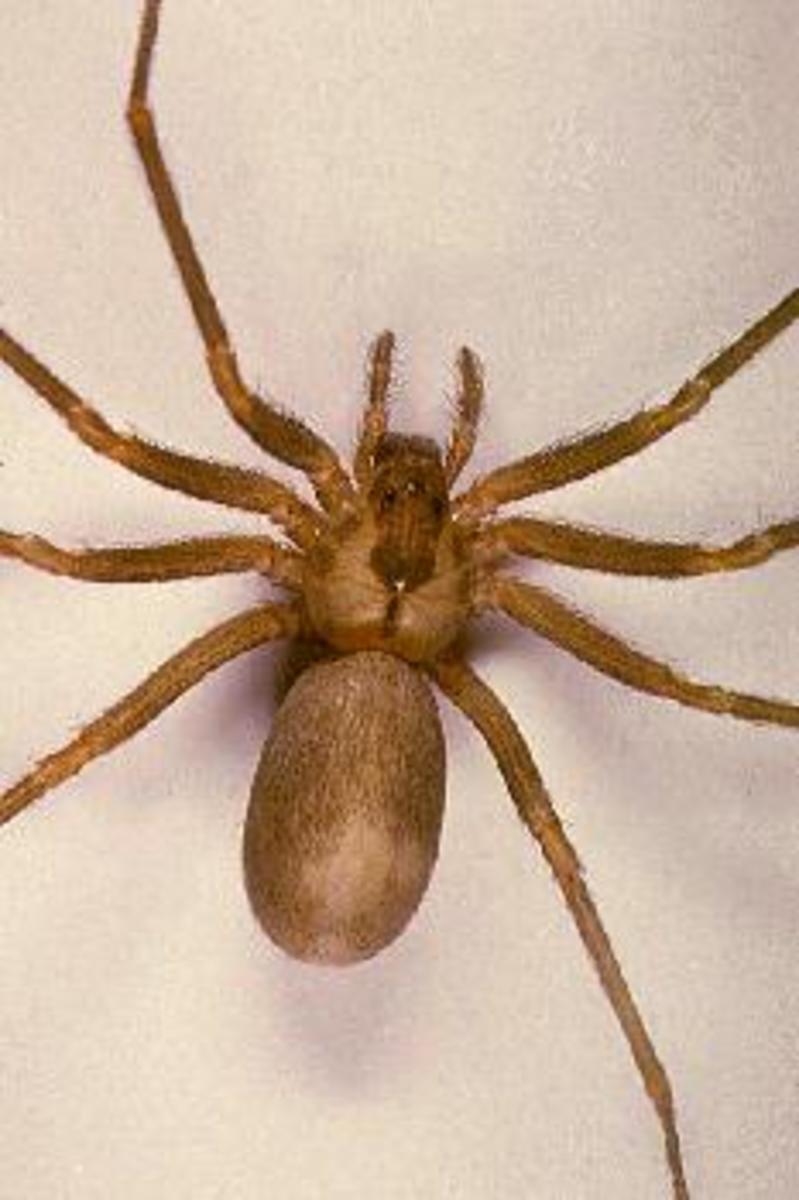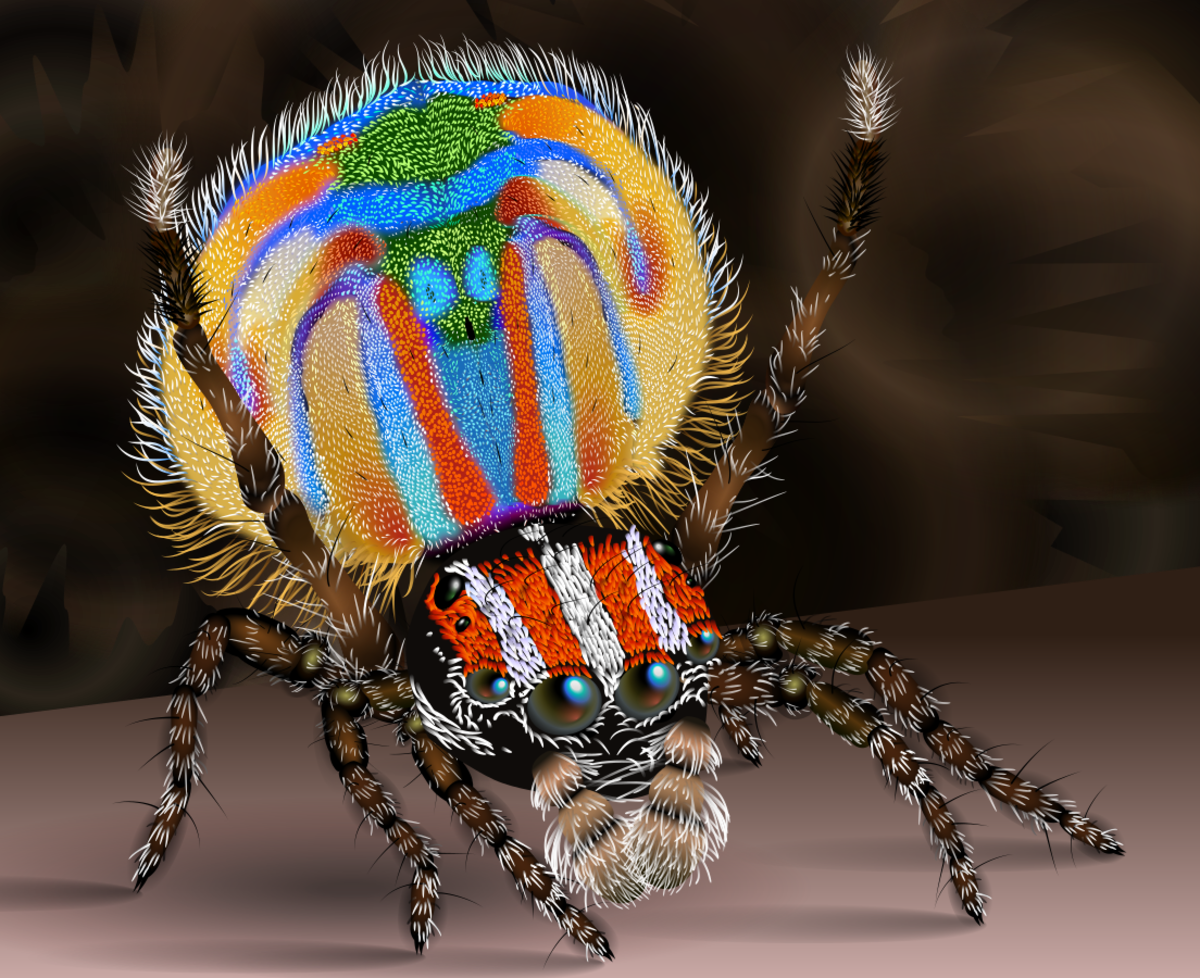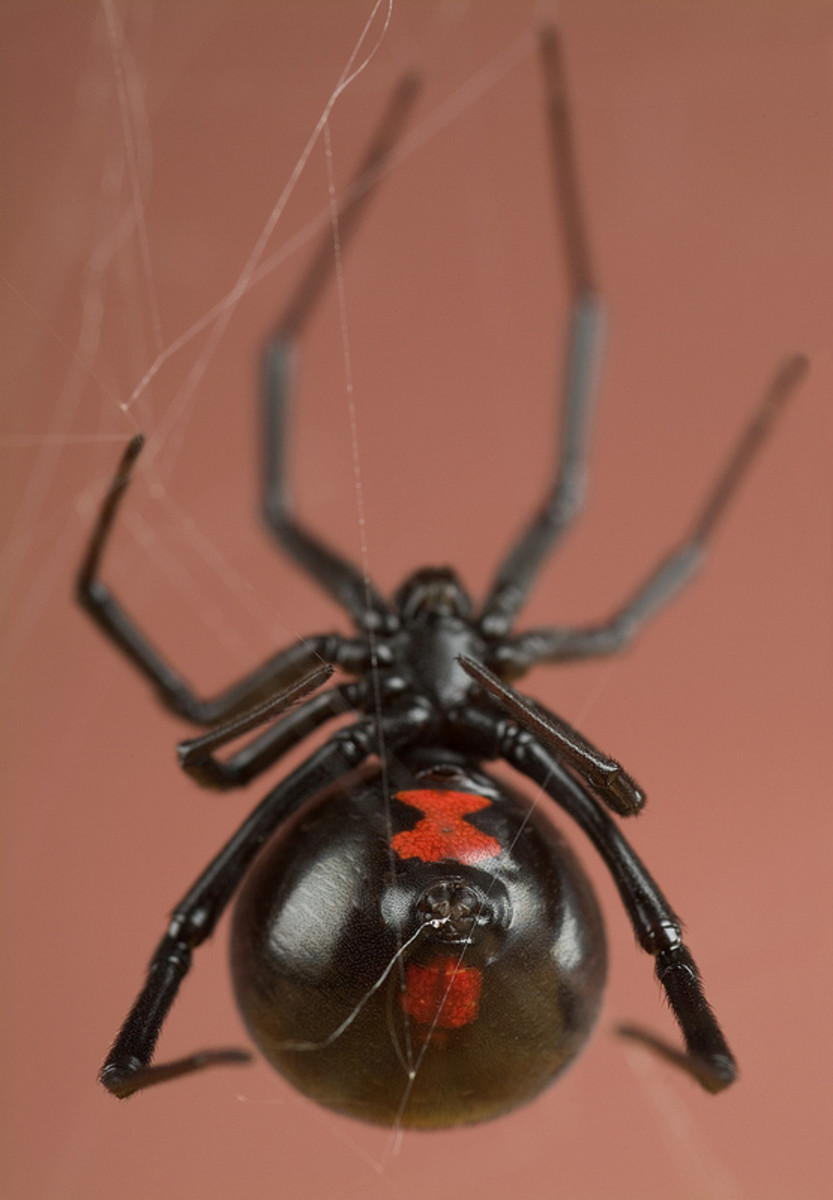- HubPages»
- Education and Science»
- Life Sciences»
- Entomology»
- Spiders & Arachnids
Arachnophobia: The Fear of Spiders
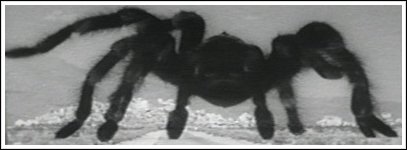

Black Widow
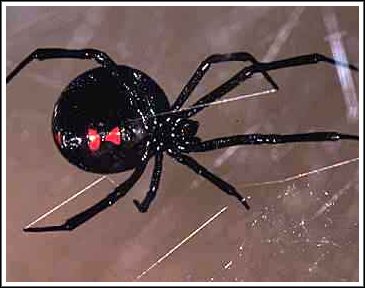
Brown Recluse
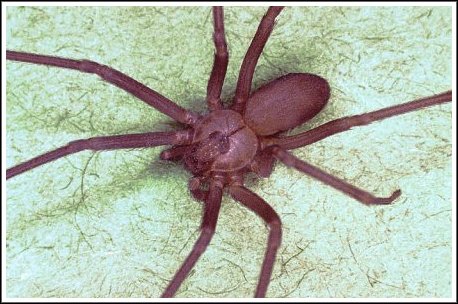
There are about 3,000 species of spiders found in North America and for the most part they get a bad rap. All are beneficial to man and an important link in our planet’s ecosystem. They subsist on other insects most consider pests. But, horror films and like publications, have given spiders an undeserved terrifying image.
Be that as it may, there are several species in North America which do pose a threat to humans. All spiders are poisonous, but the majority are too small and their poison too weak to harm humans. Basically, there are two which have been proven to be the most dangerous to people.
They are the Black Widow and the Brown Recluse (fiddle backed spiders.) The widow spider usually only bites if disturbed. But, they are more aggressive when they are protecting their egg sac. Early signs of a widow bite are swelling and reddening. This is followed by muscular pain, rigidity of the abdomen and legs, difficulty in breathing, and nausea. However, if you are bitten by any spider, it’s advisable to consult a physician if pain and other discomfort are experienced.
There are several others people should also be cautious of such as the tarantulas, sac spiders and funnel-web spiders. However, the majority of these are found in areas which are less populated. Spiders are classified as arachnids, which includes scorpions, harvestmen, mites, and ticks. As mentioned before, only a few spiders have potentially dangerous bites. But, these can cause serious consequences or even death under certain circumstances.
There are five species of widow spiders found on the North American continent. The underside of the adult female usually shows two reddish markings, resembling an hourglass. The back is usually black, but may have a broken stripe with white, red, or yellow spots.Widows prefer a dry environment such as in firewood stacks, crawl spaces or even rock piles.

Tarantula
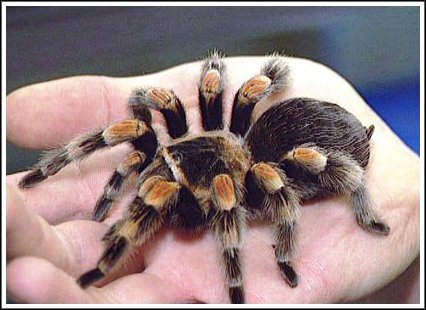
The Brown Recluse spider is found mostly in southern states. Unlike other spiders which have 4 pairs of eyes, the brown recluse has only 3. They like houses, often hiding in baseboards, ceiling cracks or behind furniture. But a few species of the Brown Recluse have been discovered other then the southern states. In California, some have migrated from western South America. Others have been found in Massachusetts, most likely a result of a few who stowed away on a vehicle or airplane.
Of course, this can happen with any spider, which may explain why a species not common to an area may occasionally be found. With some, the bite of the Brown Recluse may go unnoticed with no aftereffects. In others it can be followed by a severe reaction with scabbing, tissue necrosis and slow healing.
Tarantulas, frequently vilified in horror movie fare, are normally nonaggressive, and rarely bite. But, even if they do, the bite is not usually serious. Even so, some have extremely venomous body hairs. The main problem with these tarantulas is some are sold as pets. When molested these tarantulas rake their abdomen throwing out fine hollow, needle like, barbed abdominal hairs. These can easily penetrate skin, causing a bad rash, allergic response or worse, anaphylactic shock.

Funnel Web Spider
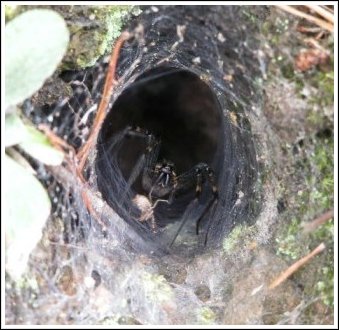
The Aggressive House Spider, genus Tegenaria, sometimes referred to as the Hobo Spider or Funnel Weaver, is normally found in dark, moist areas like caves and basements. They get their descriptive name because they make a web resembling an open ended funnel in which they trap their prey.
However, only one species of genus Tegenaria is native to the United States. It is common to Arizona and New Mexico. The other 6 species in North America are of European origin and probably arrived early in this country by hitching a ride on commercial sea going vessels. Neither is known to cause serious bite reactions in humans, although they will readily bite with very little provocation. Aggressive House Spider bites resemble ulcerating skin lesions similar to those caused by the Brown Recluse. Surprisingly, the initial bite causes little pain, but the bite of the male is somewhat more venomous.
Shortly after being bitten, a non-painful inflamed area can develop followed by blistering within a day or so. These will later rupture and produce an oozing serum and scab over. Skin tissues most often die and slough away. In a few cases, loss of tissue has required surgical intervention. Lesions can take several months to heal and have been known to leave permanent scarring.
By far, the most common symptom is severe headaches which can persist up to a week. Other symptoms can be nausea, weakness, temporary memory loss and impaired vision. But, looking on the bright side, there have been no fatalities.
However, to be safe, it’s best to just leave spiders alone and let them go about their business.



